23年度学部卒業式が行われました。総合医療科学コース61名、おめでとうございます。
朝は土砂降りでしたが、午後にはあがりました。
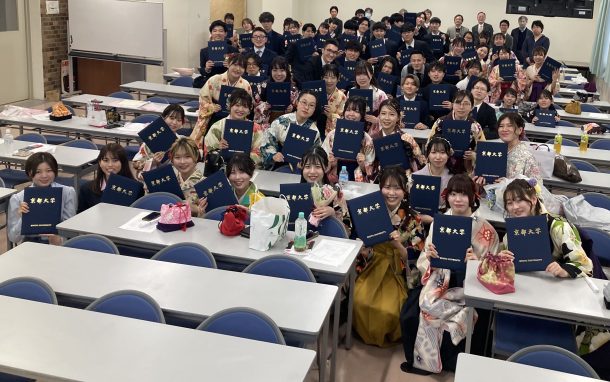
|
||||
|
23年度学部卒業式が行われました。総合医療科学コース61名、おめでとうございます。  Marieさんの論文がPLoS Oneに掲載されました。PLoS Oneは査読が早い印象がありましたが、今回の初回の査読は7ヶ月もかかりました。読んでくれる研究者がみつからなかったのでしょうか。 Marieさんの博士論文として申請、審査を受ける予定です。 Saizonou MA, Kitazawa H, Kanahashi T, Yamada S, Takakuwa T, Epithelial development of the urinary collecting system in the human embryo, PLOS ONE 19(4): e0301778. https://doi.org/10.1371/journal.pone.0301778 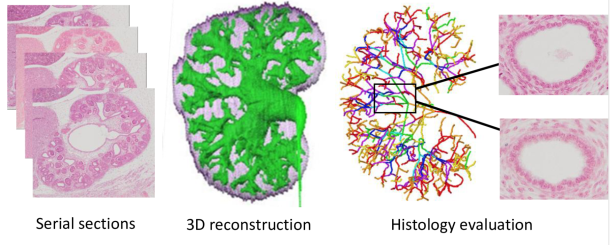 Abstract The urinary collecting system (UCS) consists of organized ducts that collect urine from the nephrons and transport it to the ureter and bladder. Understanding the histogenesis of the UCS is critical. Thirty human embryos between the Carnegie stages (CS) 18 and 23 were selected from the Congenital Anomaly Research Center, Kyoto, Japan. Epithelia of the UCS, ureter, and bladder of each sample were randomly selected. Histological findings of the epithelia were analyzed according to the following criteria: type of epithelium, presence or absence of glycogen, percentage of migrated nuclei, percentage of cells in mitosis, and the surrounding mesenchyme. A thickened epithelium lining a narrow luminal cavity was observed in the pre-expanded pelvic specimens at CS18-CS23. At CS23, after pelvic expansion, the UCS showed a thin epithelium with a large luminal cavity mainly located on the early branches, whereas the epithelium covering the subsequent branches had medium thickness. Histological characteristics differed depending on the UCS part and sample stage. The degree of differentiation was evaluated, revealing that in CS18-CS23 pre-expanded pelvis specimens, the undifferentiated epithelium was found in the zeroth to third/fifth generation, whereas at CS23, after pelvic expansion, a differentiated epithelium covered the UCS zeroth to seventh generation. In a comparison of the urothelial epithelium between the UCS, ureter, and bladder, we found that urinary tract differentiation may be initiated in the bladder, followed by the ureter, UCS zeroth to seventh generations, and finally, UCS eighth to end generations. An understanding of the histogenesis of embryonic stage UCS can aid in the clinical management of congenital urinary tract defects and other diseases. 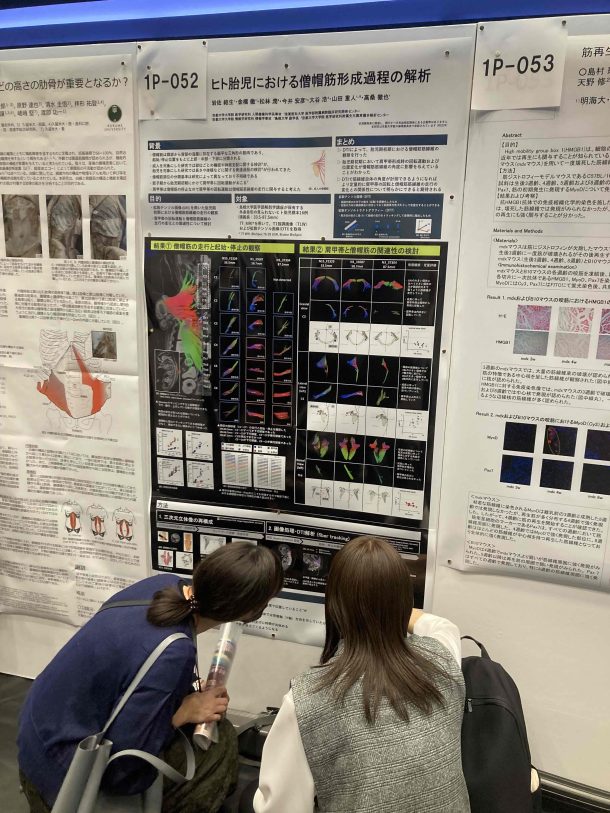 第129回日本解剖学会で発表しました(2024.3/21-23, 那覇) DTIを用いたヒト胚子期における舌筋発生の検討 須藤紗帆、金橋徹、今井宏彦、山田重人、高桑徹也 拡散テンソル画像を用いた水晶体線維細胞の配向性の検討 八田桃佳、金橋徹、今井宏彦、大谷浩、山田重人、高桑徹也 ヒト胎児期初期における鼻腔・口腔の定量的観察 青江春菜、古田万紀子、金橋徹、今井宏彦、山田重人、高桑徹也 MRIを用いたヒト胎児における僧帽筋形成過程の解析 岩佐結生、金橋徹、今井宏彦、大谷浩、高桑徹也 ヒト中腸ループと腸間膜の経時的構造変化 ー生理的臍帯ヘルニア期から還納期ー 石田七彩、植田優生、掛谷真樹、松林潤、金橋徹、今井宏彦、山田重人、高桑徹也 ヒト胎児骨盤の性差の検討 金橋徹、松林潤、今井宏彦、山田重人、大谷浩、高桑徹也 高解像度MRIを用いたヒト胎児期初期における一次脳溝形成過程の検討 熊谷美優、金橋徹、今井宏彦、大谷浩、高桑徹也 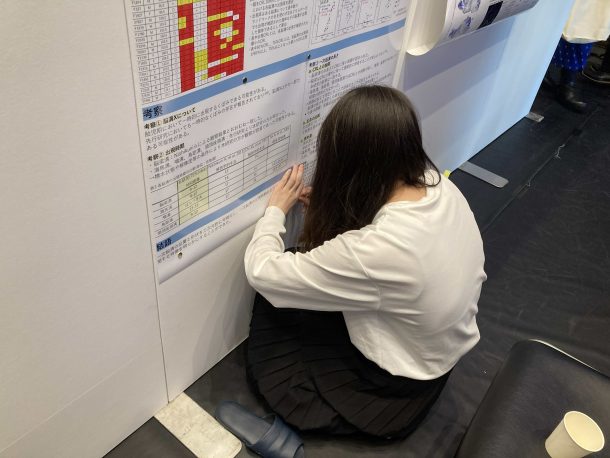 ヒトの胎児期における心室中隔の形態的変化 倭友希、松林潤、金橋徹、今井宏彦、大谷浩、高桑徹也 Marie Ange Saizonou, Haruka Kitazawa, Toru Kanahashi, Shigehito Yamada, Tetsuya Takakuwa; Epithelial development of the urinary collecting system in the human embryo 岩佐さんの錐体筋の形成についての論文がCongenit Anomに受諾されました。雑誌の表紙に採用されました。 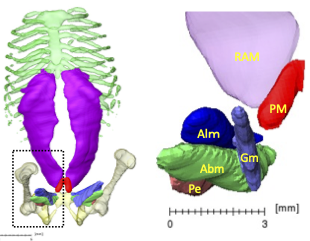 Iwasa Y, Kanahashi T, Imai H, Otani H, Yamada S, Takakuwa T, Pyramidalis muscle formation during human embryonic and early fetal periods, Congenit Anom 2024, 64, 32-39, DOI: 10.1111/cga.12551 錐体筋という腹壁前壁下部にある筋肉の形成について検討しました。 表紙に採用されました。https://doi.org/10.1111/cga.12522
The pyramidalis muscle (PM) is a paired small triangular muscle of the anterior abdominal wall, the physiological significance of which remains unclear. Recent studies have failed to detect this muscle during the embryonic period. Hence, the present study aimed to determine when PM emerged and reveal its features using high-resolution magnetic resonance imaging. Fourteen embryos between Carnegie stage (CS)18 and CS23 and 59 fetuses (crown-rump length: 39.5–185.0 mm) were selected for this study. The PM was first detected in one of the three samples at CS20. It was detected in five of the seven samples (71.4%) between CS21 and CS23. Forty-eight samples (81.4%) at early fetal period had PMs on both the right and left sides, and three (5.1%) had that only on the right side. Eight samples (13.6%) had no PMs. No side-differences or sexual dimorphisms were detected. The PM length was larger than the width in most samples, although the length/width ratio varied among the samples. The PM/rectus abdominis muscle length and PM/umbilicus-pubic symphysis length ratios were almost constant, irrespective of the crown-rump length. The PM is located ventrally inferior to the rectus abdominis and closer to the medial muscle groups of the lower limb than the rectus abdominis. The present study demonstrated that PM formation occurred in the late embryonic period, and that the frequency, side differences, sex dimorphism, and spatial position of the PM in the early fetal period were similar to those in adults.  (ベナン共和国 西アフリカ) “Hello, I am Saizonou Marie Ange from Benin, in West Africa. I like to read book, it is my hobby.”  筋肉の研究をしています。 大学からフィールドホッケーを始め、最近はキックボクシングも始めました。 研究もホッケーもボクシングもゴリゴリに頑張ります 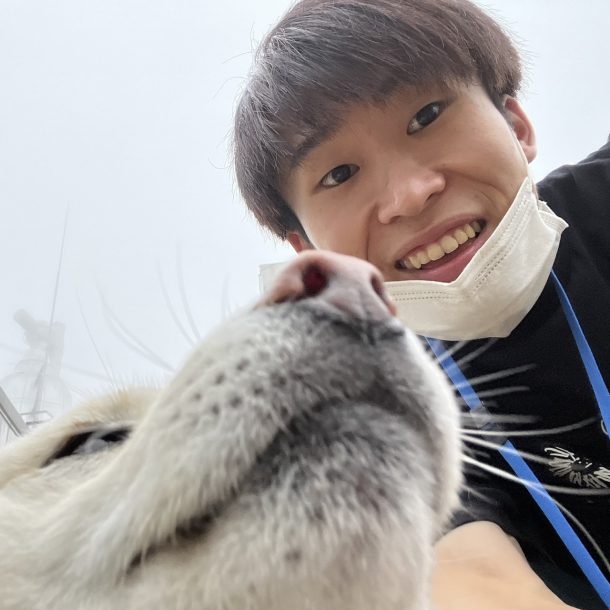 血管の研究を通してサイエンスの可能性と限界を探求しています 日々巡り逢う全ての人々および物事への感謝を大切にしつつ、研究はもちろん、勉強やバイトにも全力投球を目標にがんばります! 出身地: 兵庫県神戸市 サークル: チョコレート同好会 関心領域: 先天性循環器疾患、微生物学、高桑先生  色々あって修士2年から所属させていただく事になりました、松田幸樹です。 14年間剣道をしてました、趣味は映画鑑賞です。 卒業できるように頑張ります!  中学生のときからバドミントンをしています。 甘いものが好きです。 よろしくお願いします!  合唱をやっています 趣味は読書とゲームをすることです  趣味はドライブとゲームをすることです。 軽音サークルに入っています。 毎日コツコツ研究頑張りたいです!  高桑研究室の倭友希です。 趣味は旅行や美味しいものを食べることです。 |
||||